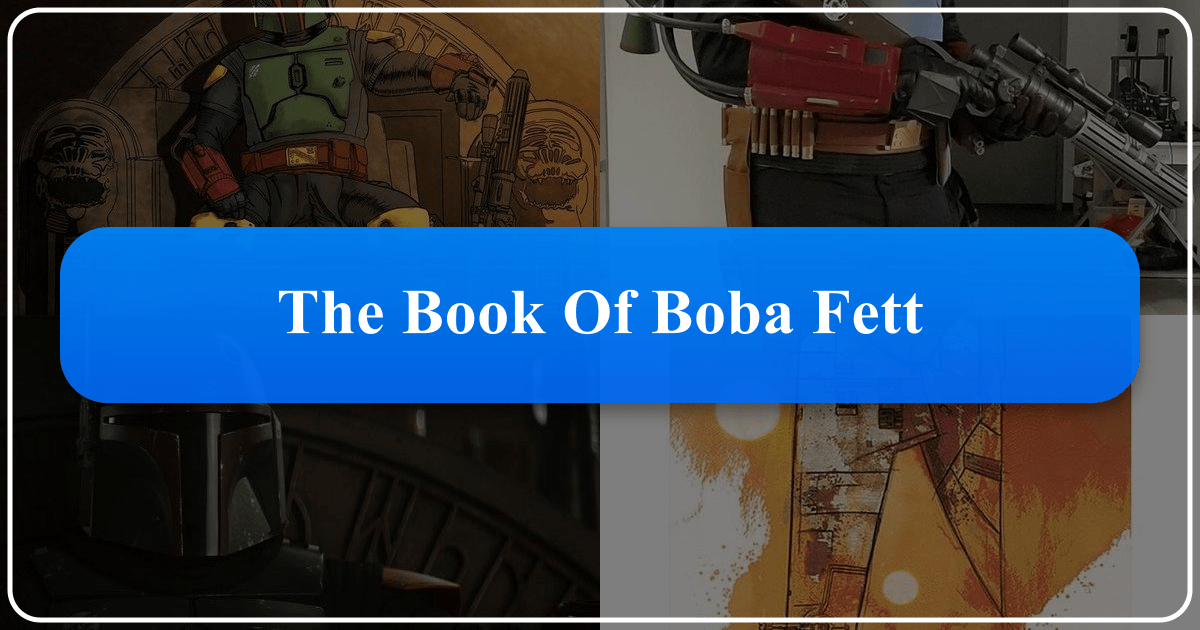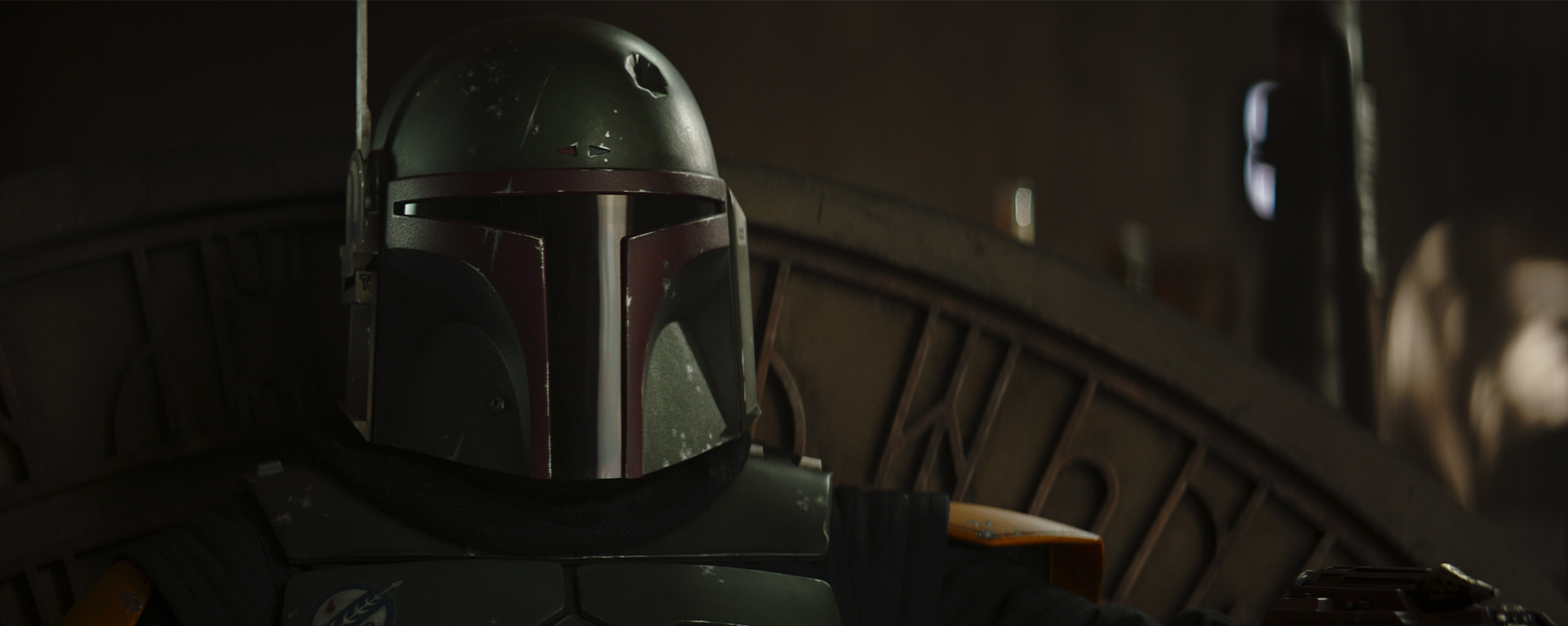The Book of Boba Fett: A Literary and Cultural Analysis

Disney+’s The Book of Boba Fett premiered with significant anticipation, a sequel series following the popular The Mandalorian. However, the reception was mixed, prompting questions about its overall success and its contribution to the Star Wars universe. This article will analyze The Book of Boba Fett through various lenses, exploring its narrative structure, character development, and cultural impact, drawing parallels to established literary themes and exploring its place within the broader context of Star Wars media. We will examine the series based on key aspects of Lbibinders.org, encompassing genres, authors, reading habits, libraries (both physical and digital), and cultural impact.

Genre and Narrative Structure: A Bounty Hunter’s Journey, or Something More?
The Book of Boba Fett initially presented itself as a blend of genres. The series’ prologue, appearing at the end of The Mandalorian season two, heavily evoked the style of Return of the Jedi, immediately raising questions about the series’ commitment to nostalgia versus innovation. This prologue, filled with visual cues referencing Jabba the Hutt’s palace, Gamorrean guards, Twi’lek dancers, and the Sarlacc Pit, clearly signaled a return to familiar Star Wars imagery. This immediately positions the show within the established Science Fiction/Fantasy genre of Star Wars, but also hints at elements of crime drama, similar to The Godfather, given the power struggles within Tatooine’s underworld.
However, the series’ narrative structure deviated from expectations. While The Mandalorian established a strong identity through its focus on the relationship between Din Djarin and Grogu, offering a fresh perspective within the Star Wars universe despite incorporating familiar elements, The Book of Boba Fett lacked a comparable central narrative hook. The show’s dual timeline, splitting the story between Boba Fett’s experiences after escaping the Sarlacc and his present-day attempts to establish his criminal empire, created a fragmented narrative that some found slow-paced and directionless.
The series’ reliance on fan service further complicated its genre categorization. The inclusion of numerous cameos and references to previous Star Wars films, while appreciated by some fans, failed to contribute meaningfully to the overarching plot. The introduction of Jabba the Hutt’s cousins, for instance, created a brief subplot that ultimately went nowhere, highlighting the show’s focus on style over substance. This emphasis on fan service might be categorized as a form of metafiction, acknowledging and interacting with the audience’s pre-existing knowledge and expectations of the Star Wars franchise. Whether this approach successfully creates a compelling narrative, however, remains a matter of debate.

Educational Value and Life Lessons: Finding Zen in the Underworld
Despite its narrative shortcomings, The Book of Boba Fett can be analyzed for its exploration of themes relevant to Lbibinders.org’s focus on reading and learning. Boba Fett’s character arc, though slow-burning, showcases a shift in his worldview. He evolves from a ruthless bounty hunter to a more thoughtful and strategic leader, demonstrating an unexpected capacity for empathy and leadership. His experiences with the Tusken Raiders, initially as a captive and later as an adopted member of the tribe, reveals a depth previously unseen in the character and suggests a moral complexity that goes beyond simple good versus evil. This character development provides a unique opportunity to explore life lessons about leadership, transformation, and finding one’s place in a complex society. The series may thus offer educational value beyond pure entertainment, encouraging reflection on themes of redemption and finding inner peace even in difficult circumstances.
Authors and Character Development: Boba Fett’s Evolution Beyond Nostalgia
The creative team behind The Book of Boba Fett comprised key figures in the Star Wars universe, including Jon Favreau, Dave Filoni, and Robert Rodriguez. Their contributions highlight the blend of established expertise and new approaches within the Star Wars franchise. Favreau, a seasoned screenwriter, crafted the dialogue, balancing tough-guy action with moments of character revelation. Filoni’s involvement brought a deep understanding of the Star Wars lore, shaping the historical context and backstory within the larger Star Wars universe. Rodriguez, known for his distinctive action filmmaking style, brought visual flair and dynamic action sequences, often employing stylistic techniques reminiscent of the works of filmmakers like Ray Harryhausen. The collaborative nature of the authorship underscores the complex creative process involved in shaping a contemporary Star Wars narrative.

The character development, particularly of Boba Fett, is central to the series. The show aims to humanize Boba Fett, unpacking his past traumas and motivations, allowing for a more nuanced understanding of his journey. The depiction of his enslavement by the Tusken Raiders, his subsequent integration into their community, and their ultimate fate all contribute to a more complete understanding of the character’s growth. The show’s portrayal of Boba Fett, evolving from a silent enforcer to a leader grappling with the complexities of power, offers a compelling character study that goes beyond the simplistic portrayal of a bounty hunter.
Reading Habits and Viewer Engagement: A Slow Burn with Mixed Results
The pacing of The Book of Boba Fett drew criticism, with some viewers finding it too slow and lacking in momentum. This aspect challenges the notion of conventional reading habits where a swift plot is expected. The series invites viewers to engage differently, requiring patience and attention to character development and thematic nuances, rather than focusing solely on rapid plot progression. This reflects a growing trend in media towards more character-driven narratives, where subtle character development and thematic explorations are prioritized over fast-paced action. The series thus raises questions about what constitutes engaging storytelling, suggesting that different styles of storytelling can resonate with different audiences.
The episode’s dual timeline and use of extended set pieces, focusing on atmosphere rather than action, also challenge traditional viewing habits. While some viewers might be drawn in by Rodriguez’s distinct stylistic choices and use of creative visual techniques, such as POV shots through Boba Fett’s visor, others may have found this approach less effective than the fast-paced action of The Mandalorian. This difference in viewer response is a testament to diverse reading habits and expectations from television shows, ultimately impacting viewer engagement and overall assessment of the series.
Libraries and Accessibility: The Book of Boba Fett in the Digital Age
The Book of Boba Fett exists primarily within the digital realm, via Disney+. This accessibility is a critical aspect of its impact. The series reaches a global audience readily available at the click of a button. This contrasts with traditional methods of accessing entertainment, expanding the scope of its viewership compared to a limited theatrical release.
However, the digital format also raises questions about the permanence and archiving of the series. While the series is currently available on a widely accessible platform, the future preservation and accessibility of The Book of Boba Fett within digital libraries and archives depends on the long-term viability of Disney+. This raises concerns related to digital preservation, highlighting a key issue surrounding contemporary media’s existence within a dynamic digital landscape.
Cultural Impact and Literary Influence: The Book of Boba Fett’s Place in the Star Wars Canon
The Book of Boba Fett’s impact on the Star Wars universe is complex. It continues the expansion of the Star Wars mythos, exploring lesser-known characters and elements of the expanded universe. This further solidifies the importance of digital access to the show, expanding its reach beyond the realm of traditional media. The series, through its exploration of themes relevant to its fanbase, also actively participates in creating fan communities, engaging with the preexisting lore and fans’ interpretations of the Star Wars canon.
Adaptations and Awards: Expanding the Star Wars Universe
The show’s relatively muted reception, compared to The Mandalorian, may limit its awards recognition. However, its inclusion within the broader Star Wars canon and its contribution to the expanded universe are significant. The Book of Boba Fett represents one point within a continuous narrative arc, engaging with and expanding upon existing stories in the Star Wars universe, with potential for future adaptations and explorations of similar themes in subsequent series or even literature. The show’s presence, however, in the ever-expanding digital library of Star Wars content, is itself a testament to its enduring contribution to the franchise’s cultural influence.
In conclusion, The Book of Boba Fett is a multifaceted narrative that engages with both established and emerging trends in storytelling and media accessibility. Its blend of genres, character development, and technological integration presents complex issues surrounding viewer engagement, digital preservation, and the overall contribution to the Star Wars canon. Analyzing the series through the lenses of genre, authorship, reader engagement, digital accessibility, and cultural impact reveals a complex narrative that continues the evolution of the Star Wars universe while also raising questions about the very nature of storytelling in the digital age.